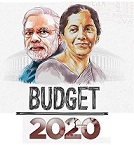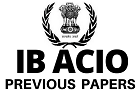sponsored links
Taking a comprehension test, we know pretty well that we are reading for information rather than for pleasure. Reading for information is a skill which is needed to face all examinations.
 Skimming & Skipping are the two words which are associated with reading process. Skimming is looking for certain information in a specific section in comprehension paragraphs. We skim the first two sentences that are usually the topic sentences which will quickly tell us what the paragraph is about. If we are skimming to find the meaning of a certain word or phrase, then skim for the word or phrase and then read the sentences immediately before and after the sentence in which the word or phrase is. This helps to get the information needed. Skipping is not paying attention to the irrelevant information given in the passage.
Skimming & Skipping are the two words which are associated with reading process. Skimming is looking for certain information in a specific section in comprehension paragraphs. We skim the first two sentences that are usually the topic sentences which will quickly tell us what the paragraph is about. If we are skimming to find the meaning of a certain word or phrase, then skim for the word or phrase and then read the sentences immediately before and after the sentence in which the word or phrase is. This helps to get the information needed. Skipping is not paying attention to the irrelevant information given in the passage.Reading comprehension - Two well known methods
SQ3R
Stands for Survey, Question, Read, Record and Review. This method is created by Francis Pleasant Robinson. Survey is similar to skimming. Question is nothing else but using the 'WH' words like Who, What, Where, When, Why & another word How. We try to find the answers for given questions very easily. Rad the passage, Record notes and finally Review.
ERRQ
This method is proposed by Watson. ERRQ stands for Estimate, Read, Respond and Question. Rapid reading techniques may be used to estimate the given text. Read the text thoroughly and carefully, respond to the text and question things about the text.
Reading is concerned with four factors, understanding, comprehending, analyzing and responding. Understanding is nothing else but decoding the information. Comprehending is identifying the central theme, main idea, supporting details and patterns in the passage. Analyzing is evaluating by distinguishing between relevant and irrelevant information and draw inferences and conclusions. Response is the last step which completes our reading process.
Taking a multiple choice question can be tricky. Typically there are 4 or 5 choices but only one correct answer, to be a smart test taker you need to follow a strategy.
First : need to eliminate one or two choices to enhance your chance of getting the correct answer.
Second : need to keep track of the time allotted to answer the questions. Don't spend too many minutes on any one question.
Third : and most important one is to answer multiple choice questions successfully. For this before looking at the possible answers, read the question twice. Frame the answer in your own words. Then, see what option best fits your answer. Ofcourse you should read all possible answers before you choose. If you don't see exactly what you are looking for, look for what closely matches your answer. Choose the one that you believe best matches the question and the text given. Skip questions you don't know and try them latter. If you don't have time, pick the one your instinct tells you is correct (but beware of negative marking).
Points to Ponder :
- Read the question
- Answer first without looking at the options
- Look at the options and check it your answer in one of the given options
- if it is, mark and move on
- if it is not, mark it unread (in the case of online exam) or put an asterisk (in the case of offline exam) and come back to it later
- Answer all the questions you know the answer to first
- Go back to the questions noted
- Go back to the text and look for the choices and choose the correct answers
- If there is no penalty and you can't find the answer then guess (as we've already mentioned above, now a days almost every competitive exam has -ve marking in it. So its better to avoid guessing)
Major Mistake areas :
- If you don't read the question carefully
- Not answer the question in your head first before looking for the answers
- Not reading all the possible answers
- Taking too much time on one question
- Not looking for answer in the text
- Changing the first answer
Making inferences is one of the most important strategy. An inference is something that is deducted from evidence in the text. When you make an inference you interpret or draw conclusions from what is not exactly said. It is a kind of reasoning which leads to conclusion. To infer means to read between the lines. They are not directly stated by the author, the reader will put together their knowledge with the clues to produce questions that point towards a solution (you will have to face these type of questions in IBPS and SBI PO Exams). When you are reading, and if you get stuck on a word, skip it. Ask yourself whether the rest of the sentence makes sense without it. Don't expect to know what every single word means. But if you don't understand the author's message and you need to understand what the word means, try these techniques.
- Context clues : These are the words around the word that you are trying to decipher.
- Example : Gita is a vivacious girl, full of life.
- The strategy adopted is 'restating' the word directly after the word. This makes the reader understand the word very easily as in the above sentence. Vivacious means full of life.
- Some times the author will give the definition in the next sentence.
- Example : Scrap books made of archival paper are more durable. Archival paper will last forever because it is acid free and won't fade or crumble.
- In the first line the word archival is a stumbling block. But after we read the next sentence, we understood that archival paper is a paper that can be preserved.
- Authors also make us understand a difficult word by giving the opposite meaning.
- Example : Jyothi was defiant, but her twin sister was cooperative.
- In this sentence defiant is a word which we may not know the meaning but as we can understand cooperative, we can deduce the meaning of defiant as difficult to get along with.
We should remember that answers must be based on and confirmed by the information given in the passage and not by any outside source. Only in certain cases, the inference may take us outside the boundary of the given passage, but even then it should be a logical consequence of the information in the passage.
Now let's have a look at an Example Comprehension here so that you will get the clear Idea. Happy Reading :)
Check complete English Tips and Tricks for Competitive Exams from here
sponsored links










 English Vocabulary from
English Vocabulary from










thank you so much for such a useful tips :)
ReplyDeletethank u
ReplyDeleteThnk u...
ReplyDeletethanks gr8ambitionz
ReplyDeletethanku..
ReplyDeletethak u, it is very help full
ReplyDelete